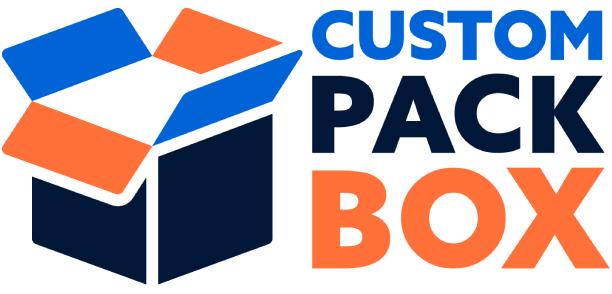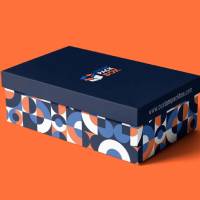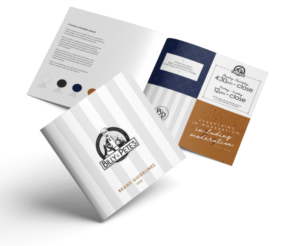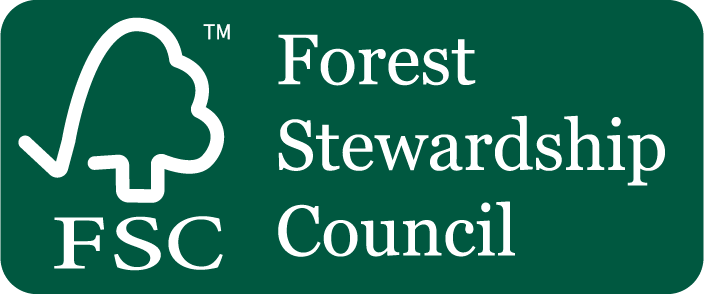The package material you use serves as the foundation for your branding and product presentation. Materials seem simple, but choosing the right one for your project can be difficult, especially if your product’s success depends on it. Before anything else, consider your industry. Product requirements will shape your content in e-commerce, restaurants, and retail. Let’s look into what are the right materials for Custom Rigid Boxes.
The Right Materials for Custom Rigid Boxes
Determining the Packaging Budget
Before you consider packaging materials, consider your budget and the weight and size of your goods. This will help you comprehend the cost of the materials alone, as well as the delivery cost of the item itself.
Custom Rigid Boxes are difficult to price because the factors are extremely dependent on your preferences. If you’re not sure where to begin, we have a guide to estimate packing expenses and how to lower them for your company. While defining your overall budget for your packaging job is the focus here, it’s definitely worth investigating the costs of each component to develop a cost-cutting approach.
It is a frequent assumption that using the best and most expensive materials will result in the best box packaging. While clients are ready to spend a little more for superior packaging due to the extra value of your materials, it is not always worth the bother.
Premium packaging, such as robust paperboard, may necessitate the inclusion of additional materials to safeguard your Custom Rigid Boxes during delivery and storage. This will inevitably raise your costs, far greater than you might imagine.
The truth is that you may use low-cost packaging materials while still achieving the desired high-end look. Folding cartons, for example, are a wonderful, low-cost alternative to luxury rigid packaging. Because it is a flexible material, it allows for a wide choice of printing and finishing options, giving your custom packaging a luxurious feel. The key to estimating your material budget is to differentiate between what you want and need your package to be.
You can also learn about the different types of custom rigid boxes.
Distribution and Storage Considerations
Understanding the life cycle of your product will assist you in determining the best packing material for your project.
Aspects of your product’s life cycle include:
- Storage
- Distribution
- Shipping locations
- Requirements for retail display
Your packaging materials should take into account how your product will be stored, distributed, and shipped. Finally, packing exists to preserve and support your goods so that it arrives in your clients’ hands undamaged. As a result, it’s critical to assess how your packaging will perform in each of these scenarios.
This is also significantly dependent on your product; if your product is extremely fragile or heavy, you should prioritize sturdy, durable packaging. Corrugated fiberboard, for example, is ideal for e-commerce enterprises because it has a strong, sturdy texture that provides perfect support and protection to any product.
The mode of transportation for your shipment is also crucial for packaging material concerns. This can help you determine the conditions under which your packaging will be used, allowing you to match your budget and quality standards.
Choose a material that fits your product cycle and all packaging channels and machinery. When it comes to Custom Rigid Boxes, your primary goal should be to ensure that your packaging can withstand all of the processes while still keeping your products intact.
It is far more cost beneficial in the long term to cover any charges that will assure the safety and durability of your products. This manner, you may avoid total product recalls, which could cost you far more than your initial bespoke packaging expenditures.
Finding a happy medium between the cost of your packaging material and the durability of your product puts you in a great position to meet both your production budget and consumer demands. If your packaging is intended for real retail places, it is best to check with and follow the retailer’s standards and recommendations for your packing.
Retailers may frequently specify packaging needs to ensure they have the capacity and capability to store and stock your products. This will most likely influence not only your material choices, but also your structural choices.
Comparing Material Characteristics
In this section, we will go over the most prevalent materials accessible for your packaging needs.
Finally, there are three major box materials for Custom Rigid Boxes to consider:
- Fiberboard corrugated
- container that folds
- Paperboard that is rigid
These materials cover the majority of your options. If you deal with a solution provider, they will be able to provide you with detailed advise on your material possibilities.
Let’s take a closer look at your material options and their benefits!
Corrugated Fibreboard
Corrugated cardboard boxes are the most common and are made of three layers of brown kraft paper. This is one of the most commonly used packing materials.
Here’s why they’re still popular in e-commerce and other industries:
- Structure that protects while also providing some cushioning
- Low delivery costs = lightweight
- Simple to personalize
- Recyclable
Corrugated packaging is extremely durable for e-commerce enterprises who ship their products directly to their clients.
With this material’s extensive printing and finishing possibilities, you can utilize it as part of your marketing strategy to ensure your customers remember your brand! Corrugated packaging enables for printing on both the outside and inside.
Folding Carton
One of the greatest packaging alternatives for lightweight products is the folding carton. There are many different types of folding cartons, making it a very adaptable packaging material option that can work for a wide range of items.
When designing folding carton packaging, there is a lot of freedom because they are available flat or pre-glued. You may build packaging with distinctive structural designs and high-quality printing, making it an appealing retail and consumer product alternative.
Because of its sustainability, folding carton boxes are also a popular alternative for packing. Because folding cartons are 100% recyclable, there are numerous environmental advantages to utilizing them!
Advantages of folding carton include;
- Printing and finishing capabilities that are versatile
- Environmentally friendly at a low cost
- Friedly for sale
- Excellent for light-weight items.
- Printing and finishing capabilities that are versatile
- Environmentally friendly at a low cost
- Great for light weight products in retail.
On the other hand, some drawbacks include;
- Not good for heavy or fragile products
- Not good for e-commerce
- Easily crushed
Rigid
Custom Rigid Boxes are constructed of thick paper of the finest quality. Rigid packaging, as opposed to having a simple dieline that lets you fold your box into form, is a little more involved and involves a lot of construction. To make your box, each side is individually wrapped, printed on, and meticulously assembled.
The expense of this form of packaging is due to its creation and construction! Although custom rigid packaging is expensive, firms use it to portray a high-end luxury impression and to improve the unboxing experience for their customers.
Furthermore, Customized Rigid Boxes provides limitless printing, finishing, and design options, elevating your brand narrative and ultimately increasing sales! Custom Rigid box packaging has a greater environmental impact than corrugated or folding carton packaging since it requires more components and processes to produce. Customers are more likely to reuse and keep custom rigid packaging for other purposes in their homes because it is also known as ‘premium packaging’ or ‘luxury packaging!’
Rigid packaging is an excellent choice for:
- luxury goods
- Stability
- Encouragement of reuse narratives
Contrary to this:
- It is not cost-effective.
- As a result, the packaging has a greater environmental impact.
- Increased shipping costs
Conclusion:
A high-end way for brands to show off their image is through rigid packing. Choose chipboard, paperboard, corrugated cardboard, and inserts to build these boxes. Compare these materials based on appearance, strength, cost, and environmental impact to achieve this goal. If you are looking for the best material for your custom rigid boxes, get in touch with a custom pack box.
















